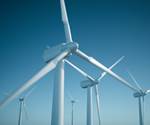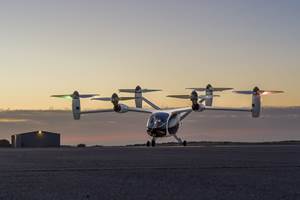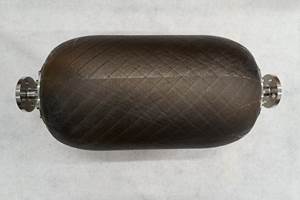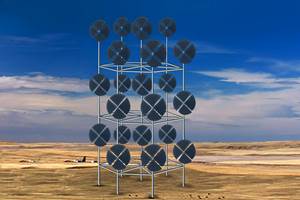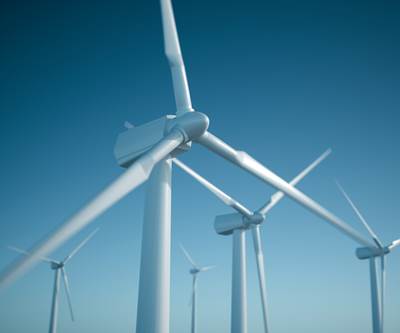AWEA: U.S. sets first quarter wind record for 2020
The first quarter of 2020 saw U.S. wind project installations rise 117% compared to Q1 2019.

Source | American Wind Energy Association
According to the American Wind Energy Association’s (AWEA) newly released first quarter report for 2020, the U.S. wind industry installed more than 1,800 MW of new wind power capacity in the first quarter, while the volume of projects under construction set a new record. The report also reveals that U.S. project developers installed more than double the amount of wind capacity in the first three months of 2020 than in the first quarter of 2019. Additionally, developers started construction on 4,124 MW of wind power, bringing total construction activity to 24,690 MW.
Eleven new wind projects totaling 1,821 MW become operational during the first quarter – more than double the installations from the first quarter of last year. Texas led the country with 540 MW of new wind projects installed, followed by Iowa, Illinois and South Dakota. There are now 107,443 MW of operating wind power capacity in the U.S., with nearly 60,000 wind turbines operating in 41 states and two U.S. territories.
Construction activity reached a new record in the first quarter of 2020, with 24,690 MW under construction across the country. That marks a 1 percent increase from the previous quarter. An additional 19,751 MW are in advanced development, including 8,296 MW of offshore wind. The near-term project pipeline now totals 44,441 MW, a 14 percent increase from one year ago. Federal waters now host 8,275 MW of the pipeline, followed by Texas with 7,060 MW, Wyoming with 4,599 MW and Oklahoma at 3,485 MW.
“America’s largest source of renewable electricity is poised to build on its 50-state footprint of job creation and economic development and to continue bringing reliable, clean and affordable electricity to communities across the country,” says Tom Kiernan, CEO of AWEA. “While we continue working to mitigate the challenges of COVID-19, the wind industry is committed to investing in the U.S. economy and keeping the lights on for millions of citizens,” he adds.

Source | American Wind Energy Association
The first three months of the year included some notable advances for offshore wind as well. Virginia passed a law to develop 5,200 MW of offshore wind by 2034. Meanwhile, Massachusetts utilities signed contracts for the 804-MW Mayflower Wind project, and Maryland opened its second round of offshore wind applications.
AWEA says the COVID-19 pandemic is posing significant challenges to the U.S. wind industry, which remains focused on protecting local communities, supporting healthcare and other front-line workers, and ensuring the safety of the wind workforce. According to AWEA analysis, COVID-19 is putting an estimated 25 GW of planned wind projects at risk, representing $35 billion in investment. This includes the potential loss of more than $8 billion to rural communities in the form of state and local tax payments and land-lease payments to private landowners, as well as the loss of more than 35,000 jobs, including wind turbine technicians, construction workers and factory workers. The industry will continue working with the U.S. Congress and other renewable energy leaders to address the challenges of COVID-19 and to ensure projects have the flexibility to continue development.
Read the full report here for more information.
Related Content
How composites have become a necessity
Composites used to be one of many material options across industries and applications, but that's not the case anymore.
Read MoreNCC reaches milestone in composite cryogenic hydrogen program
The National Composites Centre is testing composite cryogenic storage tank demonstrators with increasing complexity, to support U.K. transition to the hydrogen economy.
Read MoreDrag-based wind turbine design for higher energy capture
Claiming significantly higher power generation capacity than traditional blades, Xenecore aims to scale up its current monocoque, fan-shaped wind blades, made via compression molded carbon fiber/epoxy with I-beam ribs and microsphere structural foam.
Read MoreJEC World 2023 highlights: Recyclable resins, renewable energy solutions, award-winning automotive
CW technical editor Hannah Mason recaps some of the technology on display at JEC World, including natural, bio-based or recyclable materials solutions, innovative automotive and renewable energy components and more.
Read MoreRead Next
U.S. wind power added 9.1 GW in 2019
Total U.S. operating wind power capacity is now more than 105 GW, enough to power more than 32 million homes.
Read MoreAWEA: U.S. offshore wind poised for exponential growth
According to a report from the American Wind Energy Association, 20,000-30,000 megawatts of offshore wind capacity will be operational by 2030 in the U.S.
Read MoreAll-recycled, needle-punched nonwoven CFRP slashes carbon footprint of Formula 2 seat
Dallara and Tenowo collaborate to produce a race-ready Formula 2 seat using recycled carbon fiber, reducing CO2 emissions by 97.5% compared to virgin materials.
Read More


